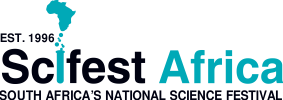Steve Sherman in conversation with Mpati Boleme (Antarctic Electronics Engineer), Jonathan Ward (SANSA Engineering Manager), Thomas Chauque (SANSA Instrumentation Technician) and Prof. Mike Kosch (SANSA Chief Scientist).
Antarctica, a continent often described as the coldest, windiest, driest, least populated and most remote corner of the world is not a place for the faint-hearted. Yet, those brave enough to journey there will forever have a deep connection to this icy wonderland.
As part of the South African National Antarctic Programme (SANAP), South Africa maintains a permanent research base in Antarctica for scientists to participate in various research programmes. The South African National Space Agency (SANSA) operates 80% of the instruments located at the South African Antarctic research base SANAE IV. These instruments monitor our near-earth space environment and provide vital data for space science research. SANSA engineers live at the base throughout the year in order to maintain and develop these systems, while ensuring that meaningful data is transferred back to the Space Agency.
This discussion, brought to you by Scifest Africa and SANSA takes you on a journey of discovery as to what life is like at the South African Antarctic research base. Hear all about the exciting adventures, traditions, unique challenges, incredible beauty that the SANSA Antarctic Engineers experience when they journey to the land of ice and snow, making for some fascinating research that they will share with us.
** Something extra special to look forward to? A video message from Antarctic Engineers, Pierre Retief and Vhulahani Manukha who are currently working at the Antarctic base! *”

